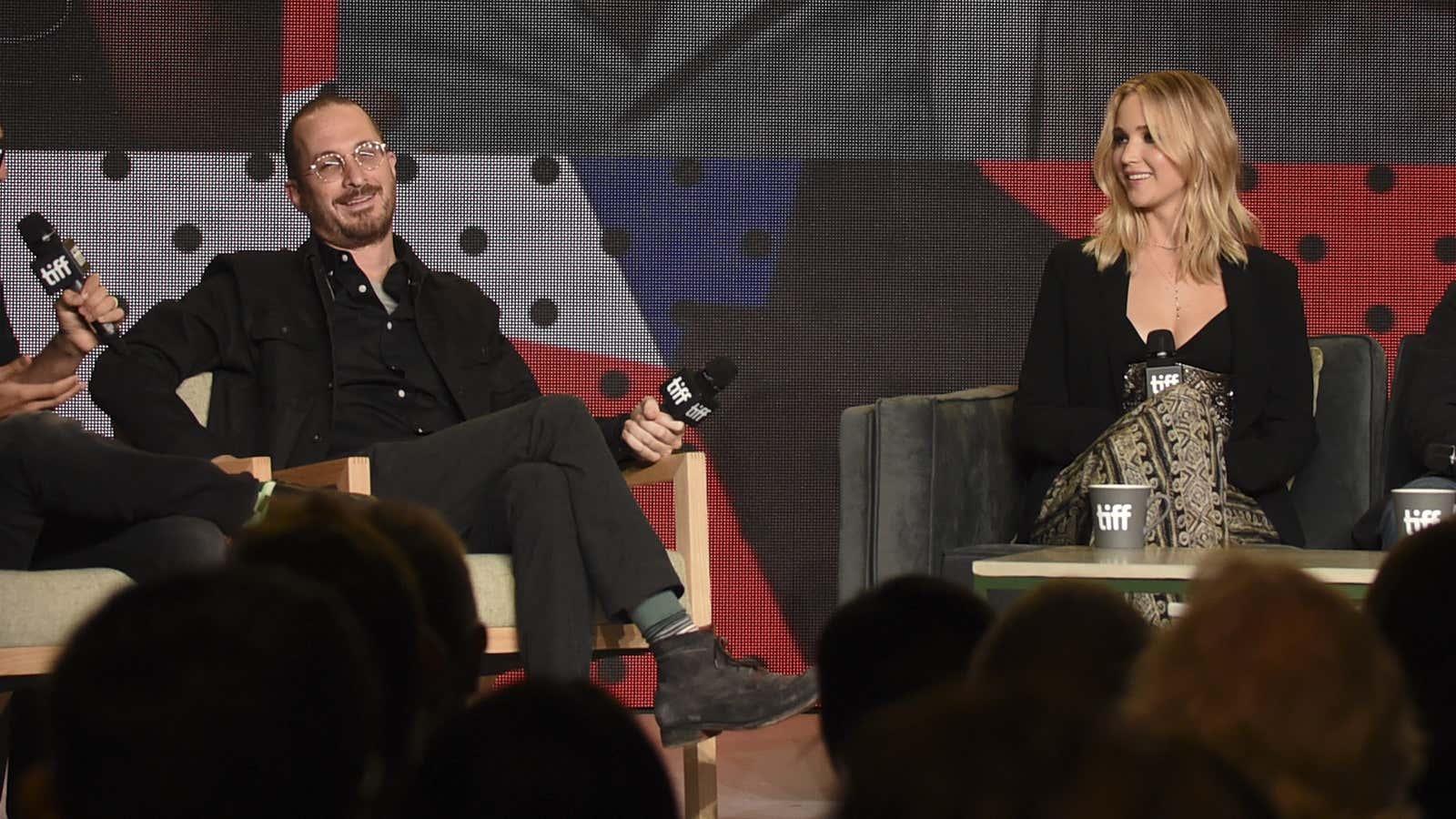Directors like Christopher Nolan or Quentin Tarantino would cringe at the thought of audiences experiencing their cinematic exploits anywhere other than in cinemas—let alone on an iPhone with crappy headphones, perhaps in the back of a car or on a crowded subway or bus.
Not mother! director Darren Aronofsky. It’s not his first choice for how audiences would watch his movies, but he accepts the reality. Take his Oscar-nominated film Black Swan, for example. It’s no longer in theaters, so anyone who wants to watch it would have do so on home video or platforms like Amazon Video and iTunes. ”Most people are going to watch my films on an iPhone,” he said in Tom Roston’s book, I Lost it at The Video Store: A Filmmakers’ Oral History of a Vanished Era.
“Even if they do see it in the theater, the second, third, or fourth time they see it might be on an iPhone, where the film is going to live forever and for eternity,” Scott Franklin, Aronofsky’s producing partner, told Quartz. ”Over time, more people will see all of our films somewhere other than the theater.”
That’s why Aronofsky works to make his films look and sound as good on mobile as they do in theaters.
Beginning with Noah in 2014, Aronofsky has switched to a narrower widescreen aspect ratio than he used for earlier movies like Black Swan and The Wrestler. “It’s closer to what people are actually going to see on a handheld device,” he explained in Roston’s book.
For his latest movie, mother!, a psychological thriller about a couple whose lives are disrupted when two strangers arrive at their home that stars Jennifer Lawrence and hits US theaters today, the shots naturally lend themselves to a small screen. There are a lot of close ups and tight shots that make the audience feel claustrophobic; you could be looking at a close up of Lawrence and not know what’s happening one foot on either side of her.
Aronofsky also had his cinematographer and colorist take a look at the movie on a video screen to see how the shots translated to a smaller screen after the theatrical version was ready, and adjust the colors and brightness accordingly.
And he created a separate sound mix for the version of the film that would play outside of cinemas, on iPhones, tablets, computer screens, TVs, or even airplanes. The movie was designed for a surround-sound environment and a lot of it, like the sound in the rear speakers, would get lost in common headphones. So after the team mixed the sound for cinemas, they mixed it again, limiting the audio to a two-speaker stereo environment and recapturing as much of that sound as possible.
Aronofsky has done this for other films like Noah as well. It’s frustrating, said Franklin. ”In this day and age, you have such incredible formats created for sound,” he said, citing IMAX audio and Dolby Atmos’s overhead speakers. “So much work goes into servicing all of those speakers and all those sounds and to have it reduced to just two speakers, and in some cases one, it’s tragic.”
Other movie studios have done similar things to make the movie viewing experience on mobile better, Franklin said. But he doesn’t know other filmmakers that are as involved in or committed to the process as Aronofsky. But it’s necessary.
“We’d love for people to see it in the theater,” Franklin said. “That’s just not the reality of the world.”
